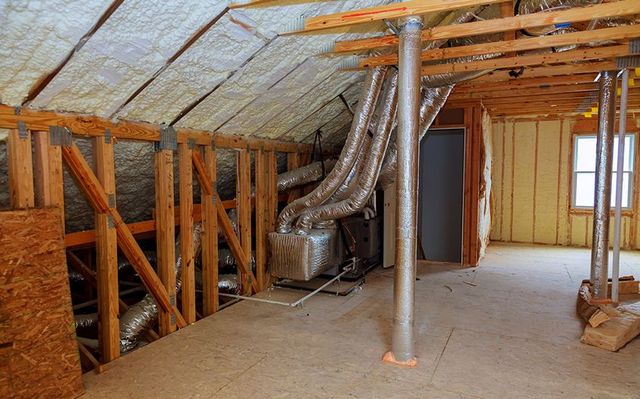Once thought to be essential throughout a home or office vapor barriers are now strongly recommended only for certain conditions and methods for creating a vapor barrier must be tailored to fit the climate region and type of wall construction.
Do i need attic vapor barrier in sc.
A vapor barrier s job is to keep water vapor in humid air from diffusing through one side of a wall and finding a cool surface inside the wall.
I install my vapor barrier in the middle of the wall system between the two walls.
Such a location works both as a vapor barrier as well as an air barrier and eliminates the need for an external air barrier not a easy application on a multi storried building as well as any special electrical pans and their sealing.
Attic vapor barrier detail for cold climates.
Vapor moves in two ways by diffusion through materials and by air leakage through gaps and holes in building assemblies.
The paper facing contains a layer of impermeable asphalt that prevents water vapor from passing through it.
With a vapor barrier you will be able to significantly reduce this movement of vapor and make your living space more comfortable.
Not every wall does.
When a vapor barrier is on the side of a wall where the dry air is i e outside in winter or inside in summer moisture problems can occur.
Do i need a vapor barrier.
There s one other important qualification.
A vapor barrier reduces the movement of water vapor by.
A plastic vapor barrier is best installed in a vented attic within climates with over 8 000 heating degree days.
For example the recommended vapor barrier in a home or office in a humid southern climate built with brick varies.
A vapor retarder is a material used to prevent water vapor from diffusing into the wall ceiling or floor during the cold winter.
Do not add a vapor barrier on top of the insulation in your attic since the paper facing on the existing insulation is the vapor barrier.
Because it s nearly impossible to seal penetrations in the ceiling the reality is water vapor will get into the attic.
What climate do you live in.
After the insulation is in place you will want to add a vapor retarder sometimes called a vapor barrier if you need one.
Hence the need to reduce moisture flow into the attic and the need for a vapor barrier.
Between the two air leakage moves far more moisture than vapor diffusion.
Whether or not you need a vapor retarder hinges on three main factors.










